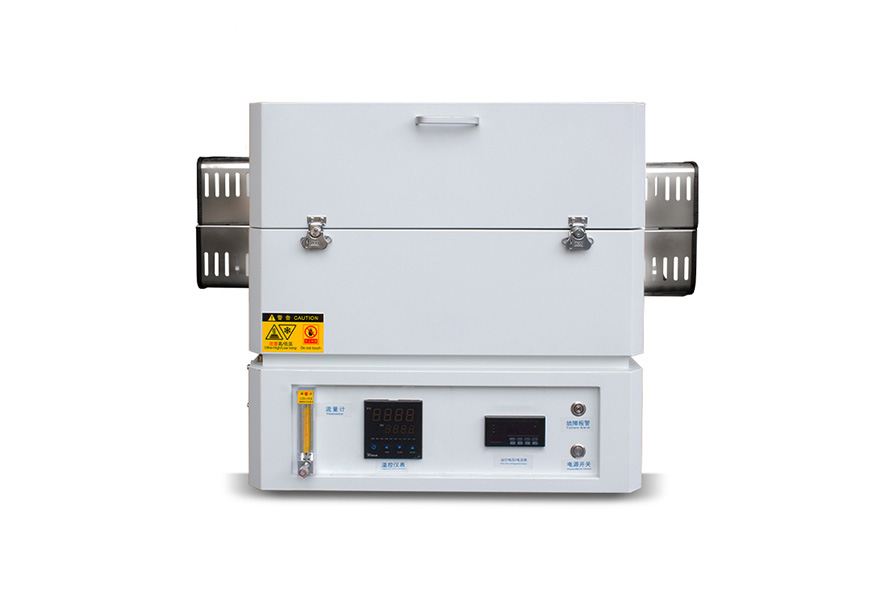In the cold winter, the role of open vacuum tube furnaces (or tube furnaces) becomes increasingly important in laboratories and industrial fields. The low temperature environment in winter often affects the operation of laboratory equipment and experimental results, and the vacuum tube furnace, with its efficient heating and temperature control system, can ensure a stable experimental environment even under severe cold conditions.
1. Coping with low-temperature environments and maintaining a constant temperature
In winter, the external environment temperature drops significantly, which may make it difficult for many experimental equipment to heat up quickly or stably. The open type vacuum tube furnace uses temperature control technology to ensure that the equipment can quickly heat up in a low-temperature environment and maintain the required high temperature state. Its sealing system and vacuum environment avoid the influence of temperature fluctuations, and even if the external temperature drops significantly, the temperature inside the furnace can remain stable, thereby avoiding interference from external low temperatures on the experiment.
2. Improve heating efficiency and save time
The indoor temperature is low in winter, and traditional heating equipment may require more time to reach the set temperature, which affects the progress of the experiment. The open type vacuum tube furnace has the characteristic of rapid heating, which can efficiently heat the sample and reduce heat loss through the vacuum environment, thereby improving heating efficiency and shortening experimental time. This is particularly important for experiments that require longer heating processes, as it can save a lot of time and improve laboratory work efficiency.
3. Maintain uniform heating to avoid uneven temperature distribution
In cold seasons, low temperatures may cause unstable airflow on the surface or inside the equipment, resulting in uneven heat distribution and affecting experimental results. The open type vacuum tube furnace, due to the efficient heat conduction in the vacuum environment, can ensure uniform temperature distribution inside the furnace. Even in low external temperatures, the heating effect of the sample remains stable and uniform, avoiding experimental errors caused by uneven temperature.
4. Prevent frosting and gas condensation
The cold winter climate may cause gas or liquid to frost or condense in the equipment, affecting the smooth progress of the experiment. The sealing structure and high-temperature heating capacity of the open vacuum tube furnace can avoid these problems. In a vacuum environment, the evaporation rate of water is accelerated, reducing the probability of frosting and condensation, thereby ensuring stable gas flow and continuous heating of liquids in the experiment.
5. Improve the completeness of the experiment
Cold weather may cause some equipment to malfunction, especially under the influence of moisture and low temperatures, which can easily affect the stability of electrical and heating equipment. Open type vacuum tube furnaces usually have multiple comprehensive designs such as overheating protection and gas leakage protection, ensuring stable operation of equipment even in low-temperature environments during winter. This not only reduces the occurrence of equipment failures, but also provides a more comprehensive working environment for experimental personnel.
6. Prevent freezing and equipment damage
Some experiments require heating or processing of samples, and in low temperatures during winter, especially when dealing with liquids and gases, freezing can occur, leading to equipment damage or experimental failure. An open type vacuum tube furnace can maintain a stable high-temperature environment, avoiding freezing of samples or laboratory equipment due to low temperatures, thereby avoiding equipment damage and ensuring smooth experimental processes.
7. Save energy
In the cold winter, traditional heating equipment may require more energy to compensate for heat loss. The open type vacuum tube furnace utilizes the characteristics of the vacuum environment to reduce heat loss, thereby improving energy efficiency. In this way, not only can the experiment be conducted, but energy expenses can also be saved in winter.
summary
The low temperature environment in winter poses additional challenges to laboratory equipment and experimental processes, but the open vacuum tube furnace, with its heating technology, can provide a stable high-temperature environment for experiments in cold seasons. It can not only improve heating efficiency, avoid temperature fluctuations, reduce frost and condensation problems, but also enhance experimental integrity and energy utilization efficiency. Therefore, the use of open vacuum tube furnaces in winter has significant advantages, providing more stable working conditions for laboratories.


 Alibaba Store
Alibaba Store Tmall Store
Tmall Store Jingdong Sstore
Jingdong Sstore







